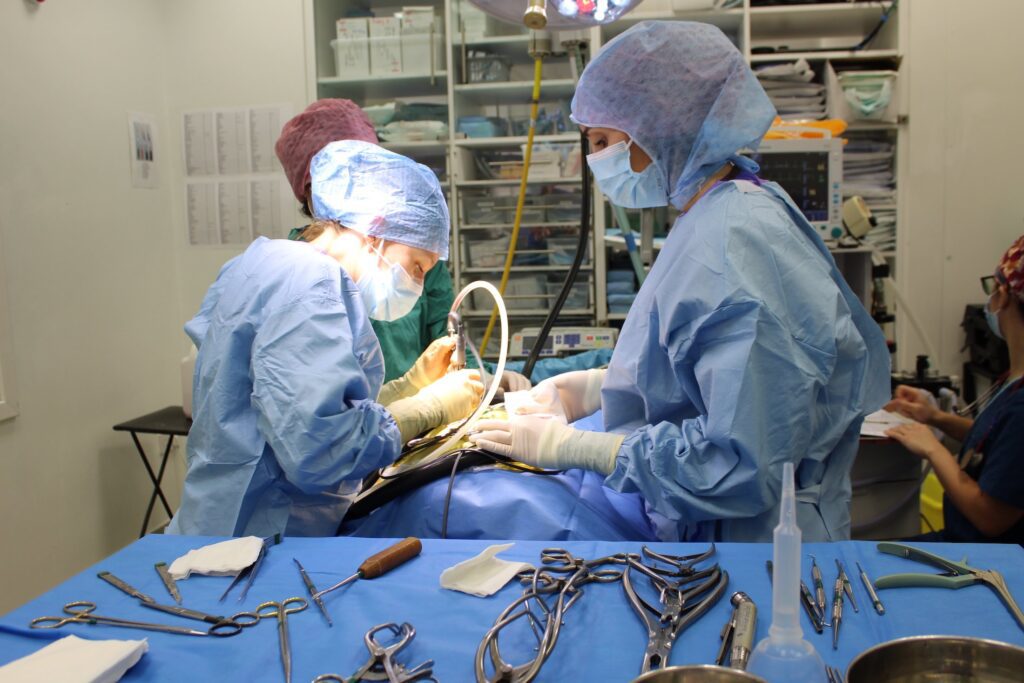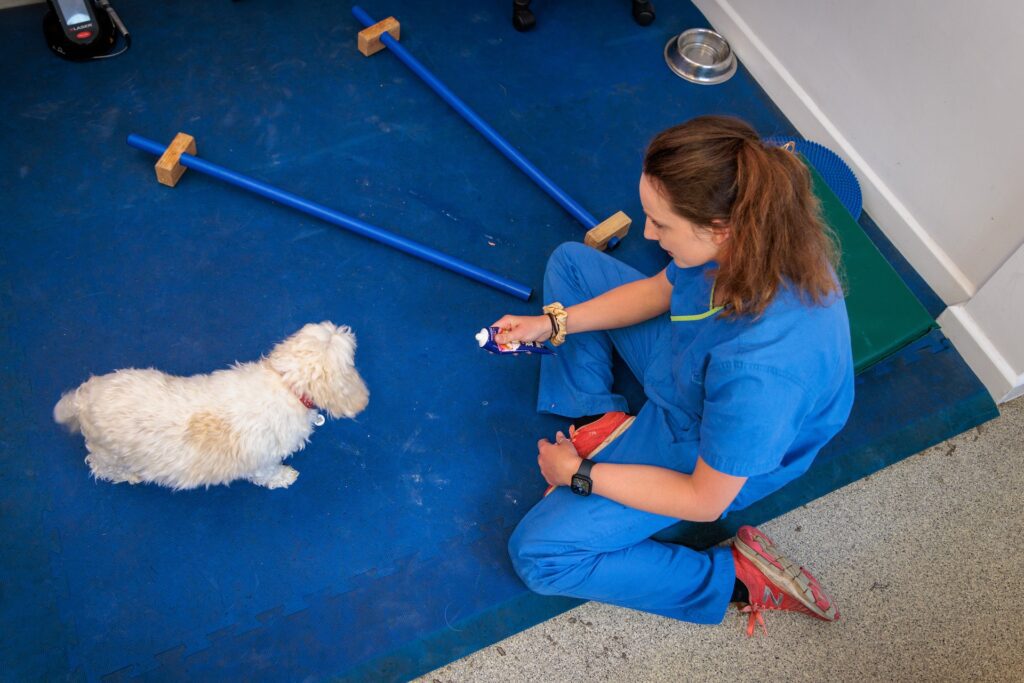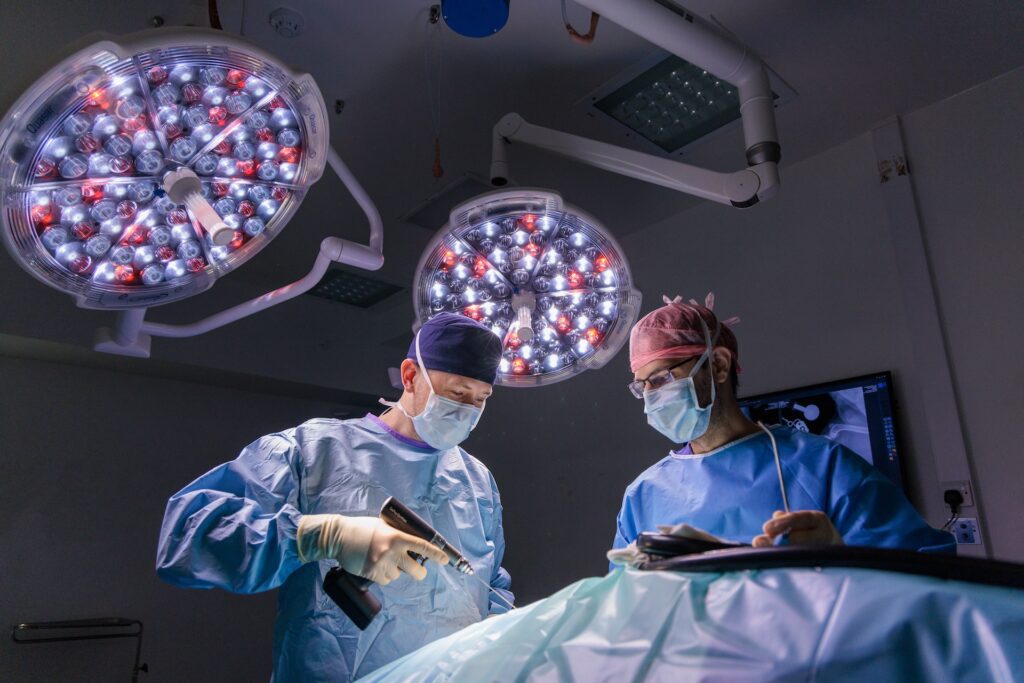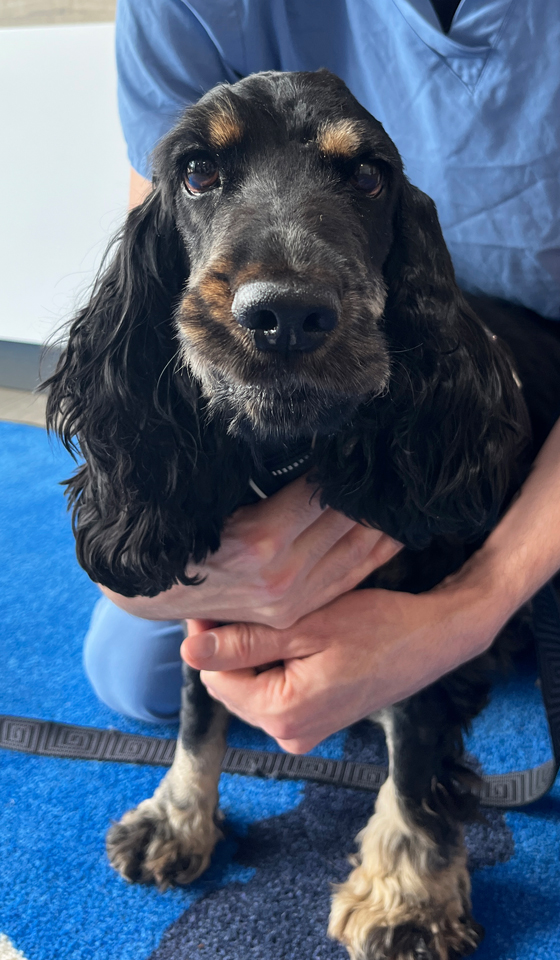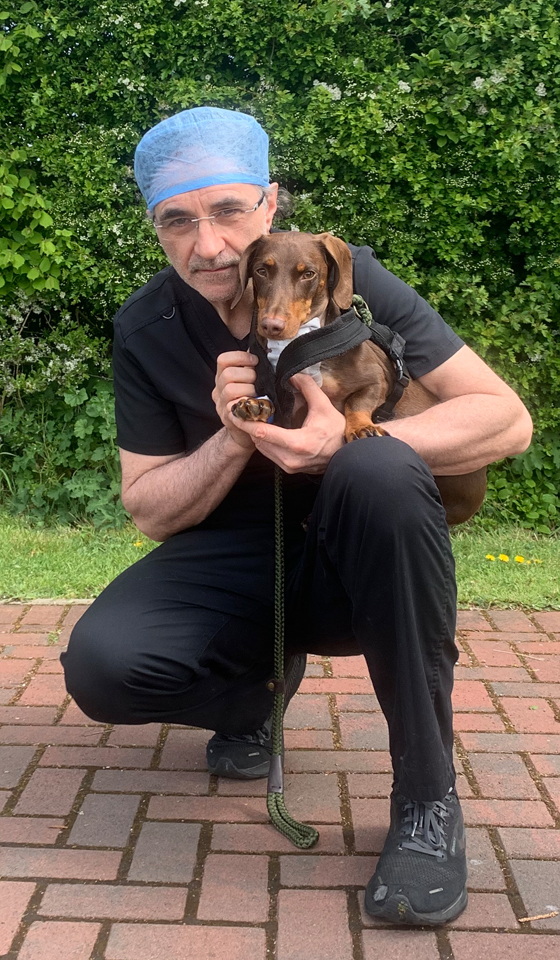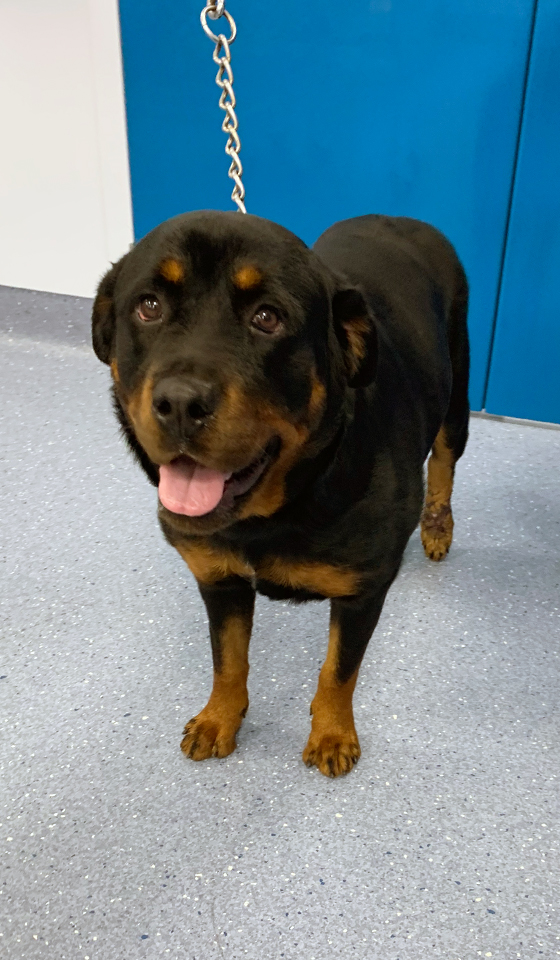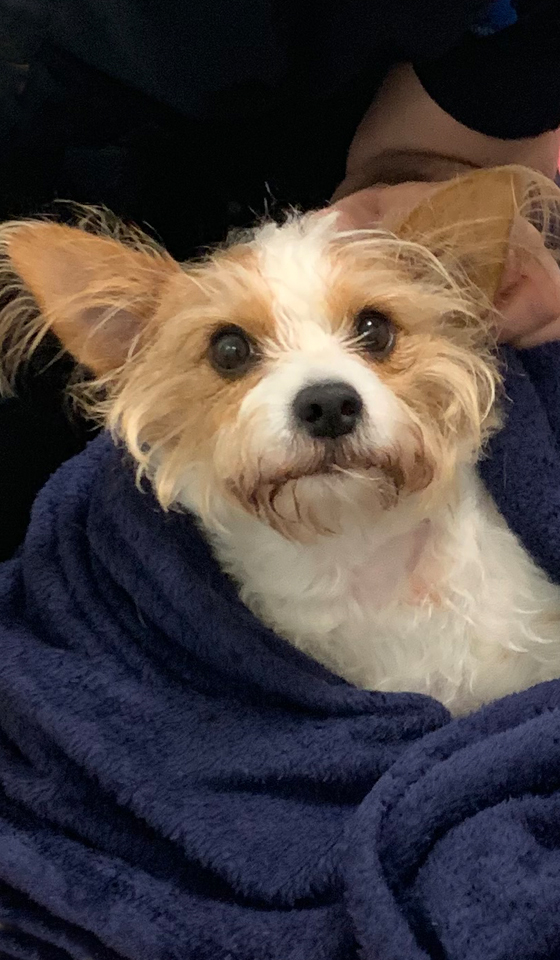Four-month-old domestic medium-hair kitten Leeroy was referred by Milford Veterinary Hospital to our orthopaedic service after he went missing and was found trapped in a neighbour’s shed later that night, unable to bear weight on his right forelimb. It was initially suspected he may have a fracture.
Diagnosis
Leeroy arrived at our practice and was examined by Surgical Resident Kirsty Maskell and Orthopaedic Registrar Mario Coppola. Although very bright, friendly and playful, poor Leeroy was in pain. A thorough physical examination and radiographs however were indicative of a brachial plexus avulsion and medial collateral ligament injury of the right elbow.
The following day, Senior Neurologist Katia Marioni-Henry carried out a full neurological examination to map the extent of the lesion and Leeroy was sedated for electrodiagnostic tests. Electromyography (EMG) measures electrical activity in the muscles and nerve conduction studies were performed to assess the response to a nerve’s stimulation of the muscle. We perform this test to help detect any neuromuscular abnormalities.
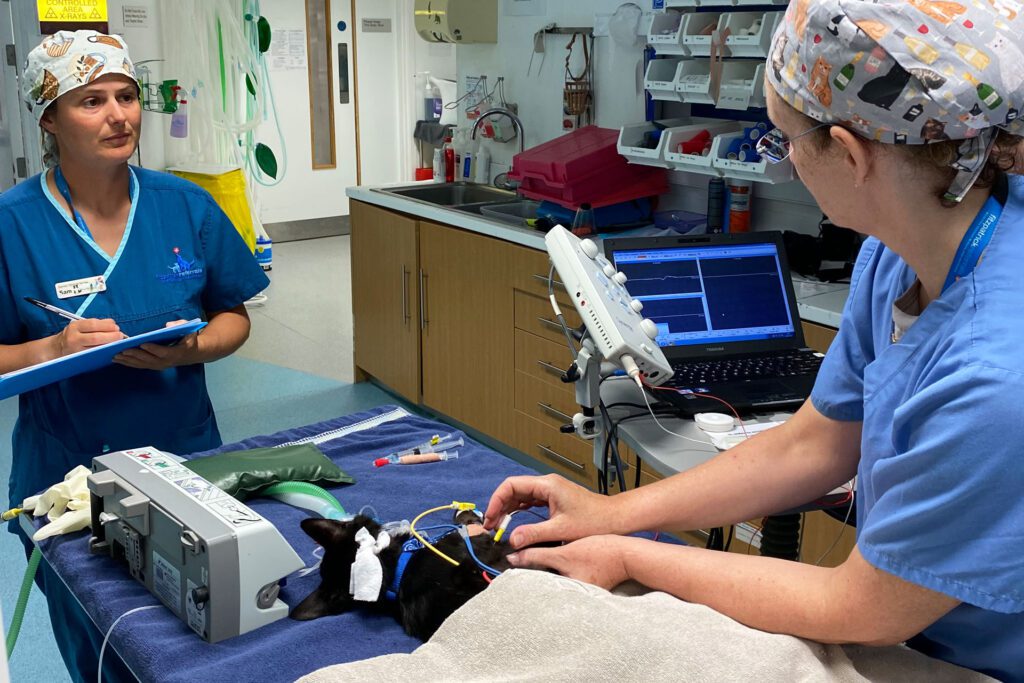
Leeroy’s EMG showed he had only mild abnormalities in his biceps muscles which may be asscioated with the trauma. Leeroy was diagnosed with brachial plexus neuropraxia, which is when the brachial plexus nerves are stretched and lose temporary function. Katia made Leeroy a brace to help keep his limb extended and avoid muscle contractions of the carpus, and also referred him to our physiotherapy department for intensive rehabilitation during his stay.
Recovery
Physiotherapy
A few weeks later, Leeroy returned for his first physiotherapy session as an outpatient with Chartered Physiotherapist Rachel Quinn.
Rachel completed an assessment to understand Leeroy’s current level of function and if any deficits were present, which included both observation of his movement/function and a hands-on assessment.
She then used this to inform the treatment given to Leeroy, which utilised a variety of functional exercises to encourage symmetrical, graded loading of the fore limbs, address any proprioception deficits, gentle range of movement and to begin the early strengthening process in accordance with the stages of healing.
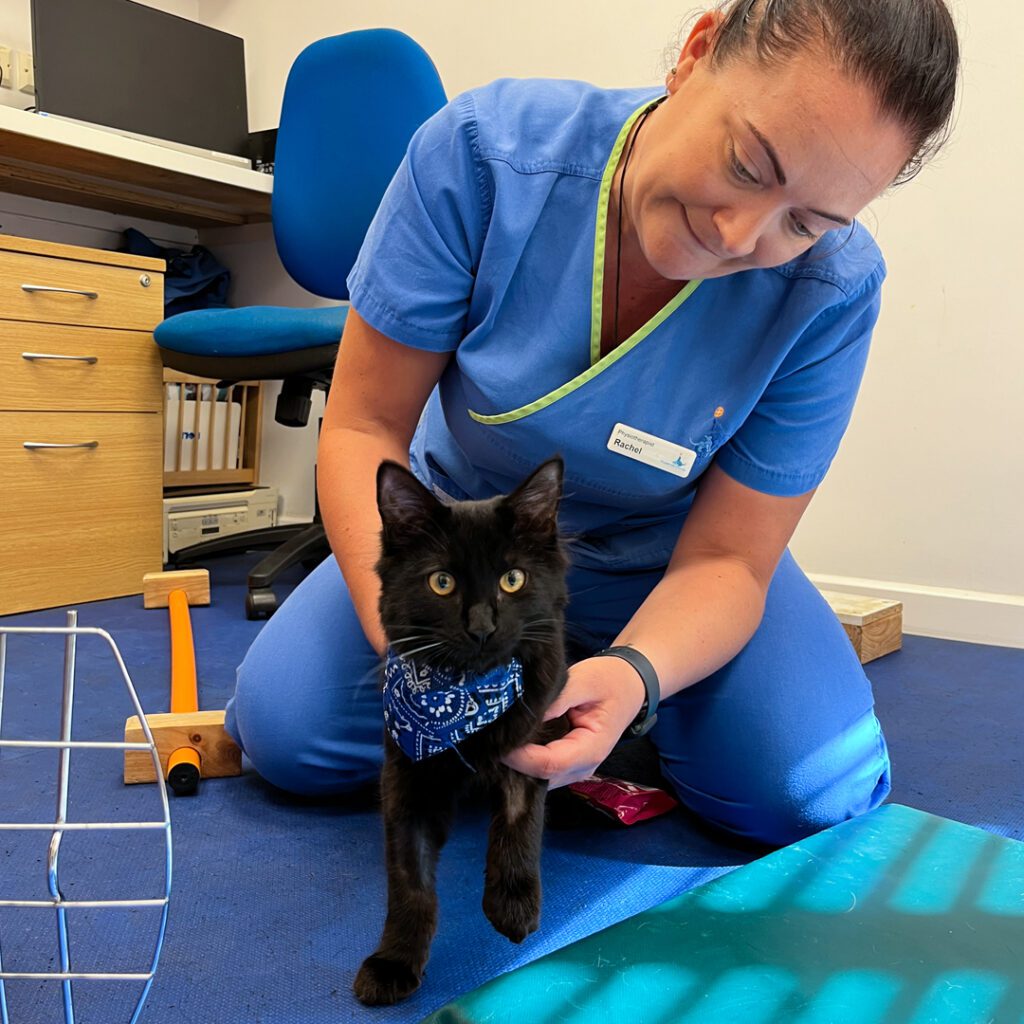
Some of these exercises were then set as an exercise programme, which Leeroy’s mum carried out daily in between his physiotherapy sessions. Chartered Physiotherapist Kathryn Hickox then saw him for two further physiotherapy sessions before discharging him. Leeroy did very well during the sessions and worked very well for treats!
Eight weeks after his injury, Leeroy’s mum shared that she is very pleased with his progress and reports he is back to counter surfing, no longer needs any medication, and has no neurologic deficits (his nerves are functioning normally).
Lovely Leeroy purred his way through all his examinations and physiotherapy, and was very playful and comfortable throughout his care. We are delighted to have been able to help this young kitten.

